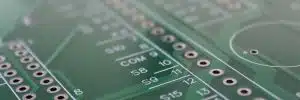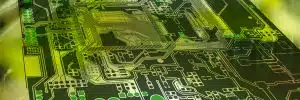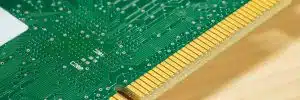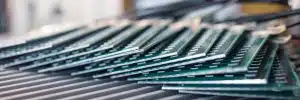JHY PCB Blog Hub
Your Source for Expert PCB Design, Manufacturing, and Assembly Insights – Stay Informed with 2025 Trends!
Exploring Innovative Applications of Stamping Sheet Metal in Modern Manufacturing
The manufacturing sector has continuously evolved, with technologies integrating into traditional processes to enhance efficiency and adaptability. One such process, "Stamping Sheet Metal", has emerged as a cornerstone in modern manufacturing, accounting for over 22% of the total metal forming market, according to a recent analysis by Grand View Research. This technique not only provides precision and cost-effectiveness but also supports the growing demand for lightweight structures across industries, including automotive and aerospace. Innovations like automation, smart tooling, and advanced materials have further propelled its application beyond conventional boundaries. As manufacturers seek to optimize production and reduce waste, exploring these innovative applications of stamping sheet metal becomes vital for maintaining competitive advantage and fostering sustainable practices within the industry.
This article delves into the transformative potential and contemporary uses of stamping sheet metal, showcasing how businesses can leverage this technology to drive progress and profitability.
The Evolution of Stamping Techniques in Sheet Metal Manufacturing
The evolution of stamping techniques in sheet metal manufacturing has significantly transformed the landscape of modern production. Initially, stamping processes were rudimentary, relying heavily on manual labor and simple mechanical presses. As technology advanced, hydraulic and pneumatic systems were introduced, allowing for greater precision and efficiency. These innovations not only improved the accuracy of stamped components but also increased production rates, enabling manufacturers to meet the growing demand for high-quality metal parts in various industries.
In recent years, the integration of computer numerical control (CNC) technology has further revolutionized stamping techniques. CNC stamping machines allow for intricate designs and complex geometries to be produced with unparalleled accuracy. Additionally, the use of advanced materials and innovations such as progressive die stamping provides manufacturers with the flexibility to create lightweight and robust components that are essential in sectors like automotive and aerospace. As these techniques continue to evolve, we witness a shift toward sustainable manufacturing practices, where stamping processes are increasingly optimized for energy efficiency and waste reduction, paving the way for a more environmentally friendly future in metal fabrication.
Advantages of Stamping Sheet Metal in High-Volume Production
Stamping sheet metal has become a cornerstone technique in modern manufacturing, particularly due to its distinct advantages in high-volume production scenarios. One of the primary benefits is its ability to deliver consistent and high-quality parts with minimal variability. This precision is achieved through the use of highly engineered dies and automated presses, which can produce thousands of identical pieces within a short timeframe. As a result, manufacturers can meet rigorous production deadlines while ensuring each component meets strict specifications.
Moreover, stamping is also highly efficient in terms of material usage. The process allows manufacturers to maximize the yield of raw materials, as it generally produces less waste compared to other manufacturing techniques like machining. This not only reduces costs but also contributes to more sustainable practices in production. The speed at which stamping can operate means that it is particularly well-suited for industries like automotive and consumer electronics, where large volumes of parts are required. Overall, the combination of speed, precision, and cost-effectiveness makes stamping sheet metal an invaluable process in high-volume manufacturing environments.
Innovative Materials Used in Modern Stamping Processes
Innovative materials are redefining the landscape of modern stamping processes, particularly in the automotive and industrial sectors. The increase in the market value of the motor lamination sector, expected to surge from USD 21.38 billion in 2025 to an impressive USD 30.89 billion, underscores the evolving demands for precision and material efficiency. Advanced materials such as high-strength steel and lightweight aluminum are becoming increasingly popular, as manufacturers seek to enhance performance while reducing weight in automotive applications.
Moreover, the advancements in stamping technologies, such as ultrafast laser stamping, are transforming traditional methods by allowing for the creation of microstructures with high precision. This innovation not only elevates the standard of surface finishes but also opens new avenues for complex designs in sheet metal fabrication. As machine learning continues to improve the accuracy of stamping processes, the synergy between innovative materials and cutting-edge technology is set to propel modern manufacturing into a new era of efficiency and creativity.
Automation and Technology Integration in Metal Stamping Applications
The integration of automation and technology in metal stamping applications is revolutionizing the manufacturing landscape. As industries increasingly adopt digital manufacturing technologies, productivity improvements are becoming evident across various sectors. A recent market analysis highlights that the motor lamination sector, for instance, anticipates a compound annual growth rate (CAGR) of 4.9%, underscoring the essential role of innovations like automation in enhancing efficiency and reducing energy losses through optimized processes.
In the context of metal fabrication, the shift towards mobile robotics is particularly noteworthy. Fabricators are compelled to adapt to fluctuating supply and demand, driving the necessity for cross-training and flexible automation solutions tailored to specific tasks. This agility not only enables manufacturers to remain competitive but also streamlines operations. Moreover, as companies like Metal Craft Spinning & Stamping expand their custom metal solutions through automated capabilities, the trend showcases the growing reliance on technology to meet customer demands and improve production schedules. The ongoing evolution in the stamping sheet metal industry exemplifies how technological integration is paving the way for more innovative and efficient manufacturing processes.
Sustainability Considerations in Sheet Metal Stamping Practices
In the realm of modern manufacturing, sustainability has become a key consideration, particularly in sheet metal stamping practices. This innovative technique not only enhances production efficiency but also offers opportunities for minimizing waste and reducing environmental impact. By optimizing the stamping process, manufacturers can ensure that materials are utilized more effectively, leading to a reduction in excess scrap and energy consumption.
Tips for improving sustainability in sheet metal stamping include the implementation of recycling programs for scrap metal and the use of eco-friendly lubricants during the stamping process. Manufacturers should also consider investing in energy-efficient machinery and maintaining equipment to avoid malfunctions that can lead to waste.
Moreover, selecting materials that are both durable and recyclable can significantly contribute to sustainability efforts. This can involve choosing alloys that have a lower carbon footprint or integrating materials sourced from sustainable processes. Collaborating with suppliers who prioritize environmental responsibility can also enhance the overall sustainability of the stamping operations. By embracing these practices, companies can achieve a balance between innovative manufacturing techniques and eco-friendly initiatives.










